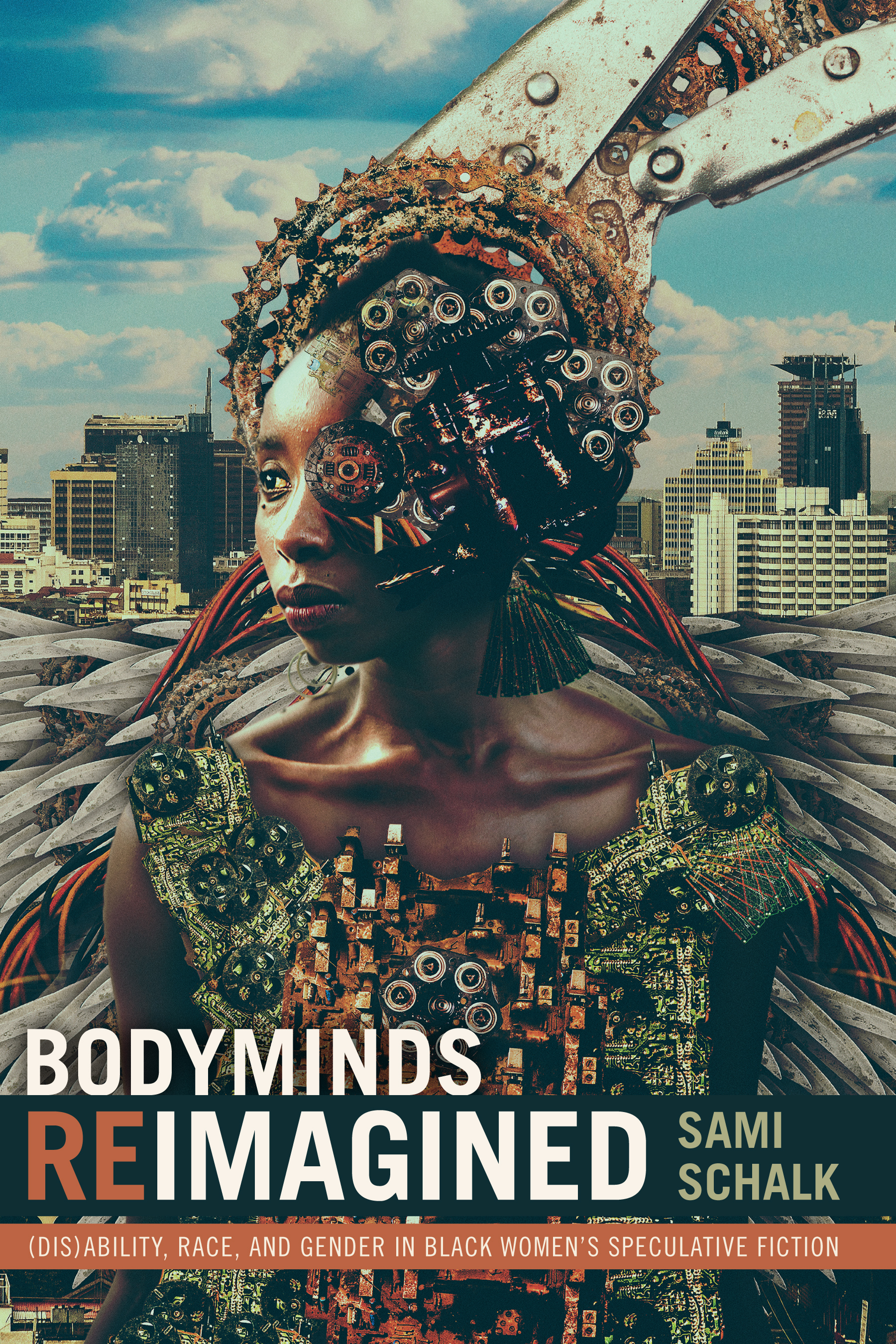Disability, Race, and Gender in Speculative Fiction

“I was attracted to science fiction because it was so wide open. I was able to do anything and there were no walls to hem you in and there was no human condition that you were stopped from examining.” These were self-reflective ruminations of the late Black speculative fiction writer Octavia Butler. At the age of ten, Butler recognized her passion for writing had been embodied through a deep yearning to embark on a journey to dynamically engage with a genre that had yet to be covered by Black women, thereby changing the narrative in science fiction. Since Butler’s intervention, speculative fiction and science told through the lens of plurality of Black womanhood has become even more prevalent. The popularity of Black American singer and songwriter Janelle Monae’s studio album “Dirty Computer (2018)” and the release of the film adaptation of speculative writer Nalo Hopkinson’s Brown Girl in The Ring titled Brown Girl Begins has pushed this genre from the margins toward a broader audience. It is not surprising that there is a heightened interest to see more representations of Black women center stage in science, technology, fantasy, and in the future. Thus, Sami Schalk’s Bodyminds Reimagined: (Dis)ability, Race, and Gender in Black Women’s Speculative Fiction is quite timely.
Historically, the voices of Black diasporic women in speculative fiction and science fiction have often gone unrecognized and not given their just due. Despite this omission, their voices and stories have undoubtedly challenged past and present political and social climates, while transforming the way we understand and reimagine the bodies of Black women. Literature, particularly speculative fiction, has been a space to call home for many Black women writers like Octavia Butler, LA Banks, Tananarive Due, and Nnedi Okorafor to tell their stories while paving new pathways of Black and diasporic imagination. In recent years, Black speculative fiction has made some exciting strides. These include the uncovering of W.E.B. DuBois’s papers and unpublished fantasy story, “The Princess Steel,” from Britt Rusert and Adrienne Brown, and re-readings of George Schuyler’s Black No More and Black Empire. However, it is now time to bring focus and attention to the works of Black women speculative writers and their subjects. Bodyminds Reimagined becomes the discovery that celebrates these writers and subjects, while challenging the status quo within speculative fiction and (dis)ability studies, and moves them from marginalized objects to realist representations.
This move and discovery is highlighted by Schalk’s use of speculative literary texts, specifically from Black women writers, as a medium to theorize this notion of reimagining bodyminds and provide a platform for their voices to be heard. Before the reader dives into the highlighted texts, Schalk provides an introductory road map that explains the significance and importance of why she chose speculative fiction while establishing an overview of Black feminism and disability studies. From this establishment, Schalk introduces readers to the term bodymind and reintroduces readers to the term (dis)ability, terms that are prominent throughout the book. Additionally, Schalk continues with laying the groundwork of the book by further establishing the theoretical foundations of intersectionality and crip theory and explores how these frameworks inform her interpretations of the speculative literary texts in question. To close the introduction, Schalk shares her methodology for how she reads and interprets disability, race, and gender in speculative fiction thus creating the bridge that leads into the forthcoming chapters.
Following a very comprehensive and informative overview, the reader is now prepared to engage with how these terms and theoretical foundations specifically connect with Black women’s speculative fiction. This exploration of (dis)ability, race, and gender is highlighted through five Black women speculative writers, which survey various pathways over the course of the book’s four chapters: Octavia Butler, Phyllis Alesia Perry, N.K. Jemisin, Shawntelle Madison, and Nalo Hopkinson. Each chapter encompasses a combination of theoretical and thematic framings with close reading examples of the texts being studied. For example, in Chapter One, “Metaphor and Materiality,” Schalk explores disability and neo-slave narratives in Octavia Butler’s Kindred. Through this chapter, readers engage this notion of examining metaphors of oppressive systems while reading disability in a neo-slave narrative. Also, in Chapter Four, “Defamiliarizing (Dis)ability, Race, Gender, and Sexuality,” Schalk examines the use of nonhuman characters such as in N.K. Jemisin’s The Broken Kingdoms, which highlights a blind demon protagonist who sees magic; Shawntelle Madison’s Coveted series about a werewolf who suffers from an obsessive-compulsive disorder; and Nalo Hopkinson’s Sister Mine about conjoined twins born to demigod and human parents. Each of these nonhuman characters demonstrates the ways in which we can defamiliarize realist disabilities and force readers to re-examine how we read disability through the experiences of fantastical protagonist characters.
These chapters, along with the others, further establish the future ways that Black women speculative writers usher in new possibilities and meanings of diverse representation as it relates to race, sexuality, and real-world situations of (dis)ability. With each of the chapters having common threads of race and (dis)ability, Schalk transforms the idea of (dis)ability from being subjected to the guise of something needing to be fixed and/or a spectacle to a reimagining of realist and pleasurable new perspectives.
Schalk’s Bodyminds Reimagined is a trailblazing book as the first text that earnestly considers the relationship between and representation of (dis)ability as written by Black diasporic authors. Although disability studies and Black feminist theory have received much scholarly attention, scholarship that broaches the complicated intersections between the two is quite rare. Thus, this intersection is the focus of Schalk’s intellectual project and the book’s greatest contribution. As explained by Schalk, this book was sparked by an intellectual awakening combined with personal identifications. As a result, under the backdrop of speculative fiction, the book critically engages with Black feminist theory with inclusiveness, literature, and possibilities to breakdown the intertwined oppressive systems of ableism and racism. Interestingly, prior to writing this book, Schalk was put-off by the speculative fiction genre justly perceiving it as white and male-centered. In her own dynamic engagement with the genre, she became fascinated as she began to realize that it is “far more diverse, compelling, and politicized than I had ever imagined.” Moreover, Schalk seeks to make a call to Black feminists (like herself) to be more inclusive in their work and explore both ableism and ability privilege, while also holding (dis)ability studies accountable for not just simply including race, but allowing other theoretical frameworks to transform the field.
For Schalk, Bodyminds Reimagined serves as personal project into the speculative fiction genre. It also was an outlet to express and reflect her own experiences as a marginalized person who identifies “as a queer, fat, black nondisabled women.” This book becomes another avenue to embrace and acknowledge Black women’s voices, while showing how they have always been able to assert their right to write and define themselves. Schalk further affirms that speculative fiction and science fiction are not just relegated to being white or male. Additionally, while she does acknowledge early scholars on (dis)ability and race such as Rosemarie Garland-Thompson and Chris Bell, she also offers readers a brief overview of (dis)ability studies as complex and problematic. Thus, this groundbreaking exploration allows for those new to speculative fiction an entry-point of new discovery and for those already familiar a chance to reinterpret and re-analyze the way we see (dis)ability, race, and gender.
Schalk is opening the door for more opportunities to engage and create new relationships with such current ideas as Afrofuturism, Blackness, and fantasy, and new ideas like Marleen Barr’s feminist fabulation and Ingrid Thaler’s Black Atlantic Speculative Fiction. Although Schalk is primarily focused on Black feminist theories and (dis)ability studies, this book can easily be used in a plethora of fields such as Africana studies, critical race studies, women and gender studies, Black diaspora studies, cultural studies, science fiction studies, and literary studies.
Much in the same way that Martin Luther King Jr. convinced Nichelle Nichols to continue her role in the original Star Trek television series because as a Black American woman she helped represent a future to which people could aspire, Sami Schalk does that by shining a light on the longstanding work of Black women speculative writers. Schalk gives us hope as to the many ways in which these writers can be used to dismantle the oppressive systems of ableism and racism while promoting new spaces of feminist scholarship and activism.
Copyright © AAIHS. May not be reprinted without permission.
